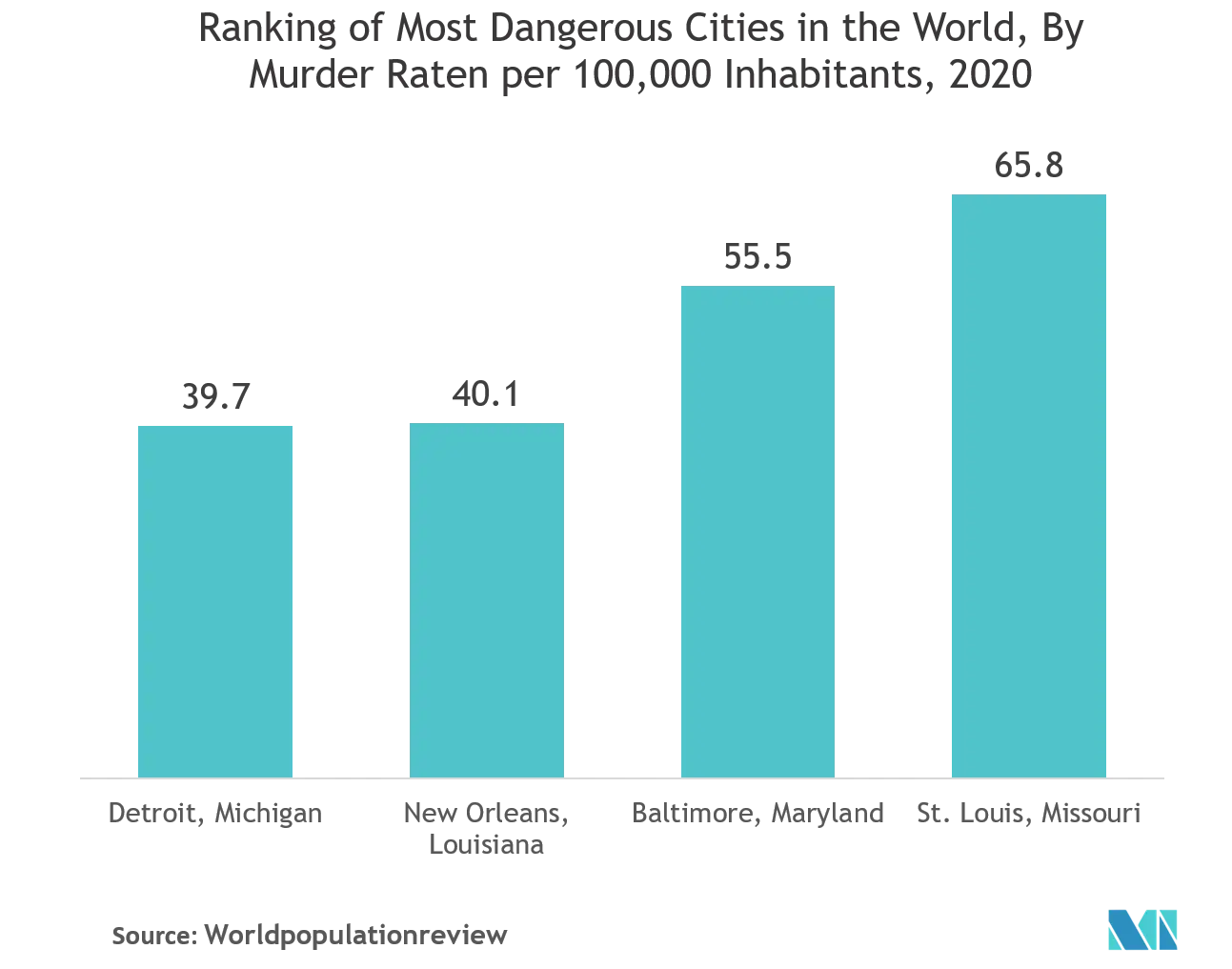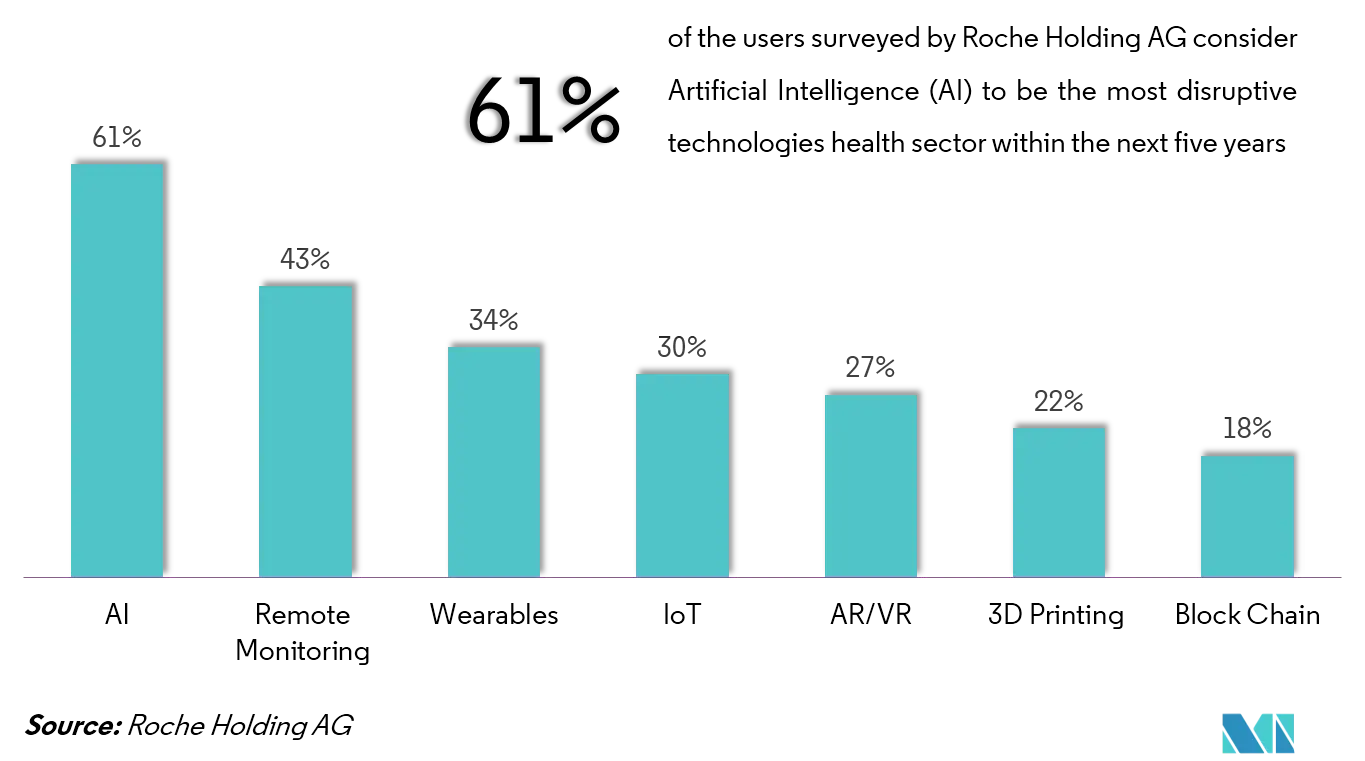Market Trends of United States Facial Recognition Industry
This section covers the major market trends shaping the US Facial Recognition Market according to our research experts:
Increasing Demand for Surveillance Systems to Enhance Safety and Security
- The demand for surveillance as part of access control is on the rise in the private sector, the level of authentication offered by facial recognition in the space is driving the demand. Enterprises are using technology as a means to ensure only authorized individuals get into facilities such as bank vaults, training centers, board rooms, server rooms, and other sensitive locations.
- Moreover, the most significant facial recognition surveillance system in the region is operated by the FBI. The FBI’s ID system maintains a facial recognition database with images of more than 117 million Americans. The FBI conducts, on average, 4,055 searches every month to identify individuals with facial recognition systems. The US Customs and Border Protection is using a facial recognition system to identify and stop criminals and terrorists at the border. Its new facial comparison biometric system looks at the traveler and compares them to the passport photo.
- In recent times, face recognition has been improved with the use of matching algorithms and neural networks to help in preventing criminal and terrorist activities. For instance, Virginia Beach was recently awarded a grant that will allow cameras to be installed to capture potential criminals and to find missing children, as well as Tampa, Florida is currently making the use of face recognition systems in its popular tourist areas, such as parks and airport arena for security purposes.
- However, the privacy debate around facial recognition is hindering the market growth. In March 2020, the American Civil Liberties Union (ACLU) filed a lawsuit against the Department of Homeland Security (DHS) because of its use of facial recognition technology at airports. Similarly, California, in September, passed a bill to ban the use of facial recognition-equipped cameras by law enforcement.

Healthcare is Expected to Witness Significant Growth
- Facial recognition is slowly gaining momentum in the Healthcare industry, primarily due to the advancements in Artificial Intelligence (AI) that has widened its application across a host of use-cases such as hospital traffic pattern analysis, securing hospital facilities, and recognizing patient fraud, among others.
- The benefits of facial recognition are spreading quickly in the healthcare industry. The technology has the potential to replace passwords or devices to enable quick access to medical records. The National Institutes of Health (NIH) has carried out a new study which strengthened the hypothesis about the effectiveness of AiCure‘s medication adherence solution.
- The technology uses a form of artificial intelligence for facial recognition, to keep track of patients taking correct medication intake, according to a report by Med City News. The findings published in Stroke, a medical journal, were based on a 12-week randomized controlled trial.
- Moreover, the spread of Coronavirus has increased the growth of face recognition in the healthcare industry. Vendors in the region are adopting partnerships to cater to the suddenly spiked demand and provide customized solutions and services. For instance, TensorMark has joined hands with health system University Hospitals to offer solutions with AI and biometric facial recognition technology to ease the process of returning to work amid COVID-19.

